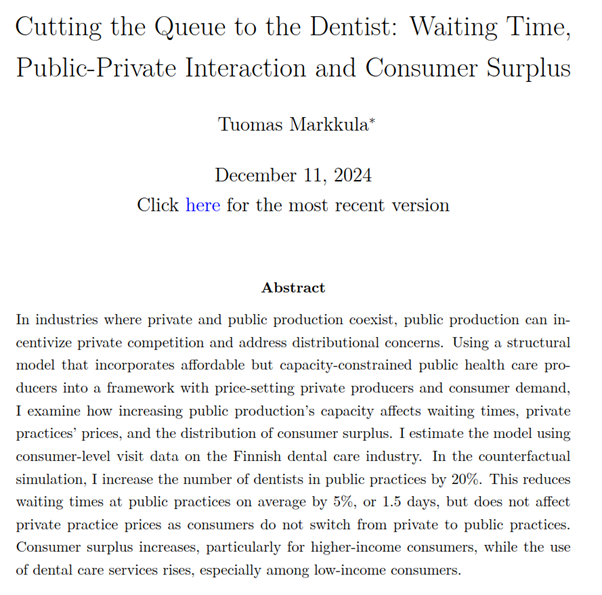
Tuomas Markkula
@tuomasmarkkula
Followers
244
Following
1K
Media
4
Statuses
152
PhD candidate in economics @AaltoUniversity and @HelsinkiGSE. Empirical IO, health economics and structural econometrics
Joined July 2016
RT @TeemuPekkarinen: We’re happy to host the 1st European Economic Theory Conference in Bonn next fall! Submissions in all areas of economi….
0
2
0
RT @aang_econ: *Call for papers* for the Second Nordic Meeting in Urban Economics, to be hosted in Helsinki, Finland, Sept 8-9! https://t.c….
sites.google.com
The Second Nordic Meeting in Urban Economics will be held on September 8-9, 2025, in Helsinki, Finland. The purpose of this meeting is to foster exchange and collaboration between researchers in the...
0
13
0
RT @HelsinkiPoS: @TeemuLari interviewed Professor Ha-Joon Chang as he visited us in Helsinki. The interview is now out in @ErasmusJPE. Iss….
0
2
0
RT @HelsinkiGSE: Introducing our 2024-2025 Job Market Candidates, all seeking employment starting Summer 2025. For more information, please….
helsinkigse.fi
0
7
0
#JMP alert!. Can increasing public healthcare production reduce waiting times, address equity concerns, and curb private sector market power in a setting with congested public services and costly private options? I find that it only partially addresses these issues. #EconTwitter
1
12
31
RT @Paula_Navarro1: On the #EconJobMarket !.🚨 JMP alert ✈. How do firms respond to the removal of a technology?. In my #JMP I exploit the b….
0
21
0
RT @SamuelMSolomon: I'm very excited to be on the 2024-25 academic job market!. Check out my research here:
samuelmsolomon.com
0
6
0
Cool stuff!.
🌍 Excited to announce Dani Rodrik's lecture "Industrial Policies: The Old and the New" as part of our Argumenta Distinguished Lectures series! 🗓️6.3.2024 15:00 (Helsinki time) @rodrikdani @helsinkiuni @SocSciHelsinki @HelsinkiPoS @Skr_fi 🔗
0
0
2







